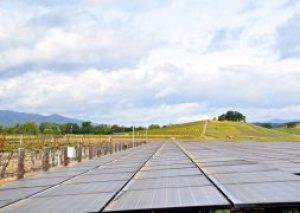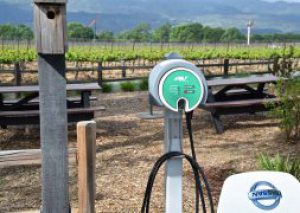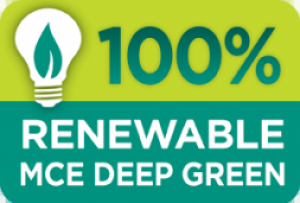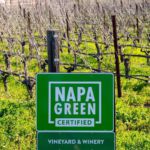
Built in 2006, Honig's first solar array generates 147 kilowatts of power.

Emission-free errands made easy with the winery's electric vehicle and charging station.

When the winery does draw energy, it receives power from 100% renewable sources through Marin Clean Energy's "Deep Green" program.
Saving Energy With Solar at Honig Vineyard and Winery
Wineries are typically family-owned, generational businesses. You're not going to stop using power, and power is only going to get more and more expensive. It makes so much sense to invest in solar. It has a five or six year payoff and then you're saving money.
Living and working on this property I realize I am the caretaker for this generation. I want to pass it on to the 4th generation, and hope it continues to the 5th and 6th generation. That means both the business and the land need to be healthy and vibrant. We're creating healthier soils, healthier employee and healthier wines.
Little changes add up. To improve energy efficiency at your winery Michael Honig recommends:
1
Get a free PG&E energy audit. They’ll identify opportunities to improve efficiency, make upgrades and clearly lay out your payback period. They also have rebates and financing options.
2
Revisit Solar. Even though solar has become standard technology, many of people haven’t jumped in. If you haven’t pursued solar in the past due to costs, it’s time to revisit. Costs have dropped substantially. For many vintners, it makes sense.
3
Go “Deep Green” with MCE Clean Energy. MCE became active in Napa County in February 2015 and everyone signed up with PG&E in unincorporated Napa County is automatically enrolled in their Light Green 50% renewable energy program. You can sign up to get 100% renewable energy at prices that are very competitive with traditional energy – and often even cheaper.
4
Think about energy in a broader context. For example, hauling waste uses a lot of energy. Kristin Belair recently requested a waste audit and we’re going to ask our staff if we can reduce our waste by 20% in the next year. It probably won’t require a big plan – we just need to talk to our operations staff and make sure they’re sorting and know what’s recyclable. This won’t just reduce waste, it will also save energy.
5
Keep Improving. Sustainability is not a one-off investment. There are always new ways, even small ways, you can lead by example and make sustainability a part of your business culture.
Napa Green is about producing wine responsibly and being proud of our respect for the environment and for future generations.
- Elizabeth Vianna, Chimney Rock Winery


